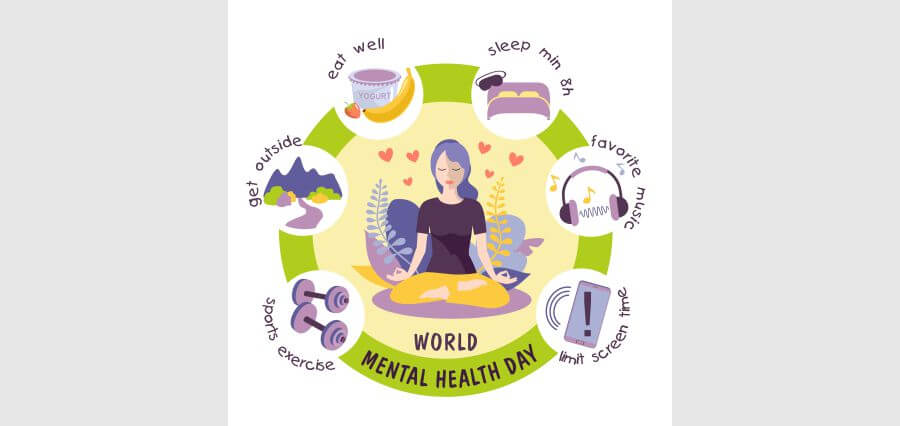Mindful tech
In today’s tech-driven world, where technology invades every aspect of our lives, the intersection between technology and mental health has become increasingly pronounced. The convenience and connectivity offered by digital platforms come with a price tag on mental well-being. It is imperative to acknowledge and address the profound impact technology has on our mental health. Achieving a harmonious balance between the benefits and challenges of the digital world necessitates a comprehensive approach encompassing individual mindfulness, societal responsibility, and continuous research efforts.
Understanding the Digital Landscape
The digital landscape shapes much of our daily experiences, influencing how we communicate, work, learn, and entertain ourselves. However, alongside its numerous benefits, the digital world also presents challenges that profoundly impact mental health.
Excessive Screen Time: One of the most pervasive issues in the digital landscape is excessive screen time. With smartphones, tablets, computers, and other devices constantly at our fingertips, it’s easy to get sucked into endless scrolling through social media feeds, binge-watching videos, or playing games. However, spending excessive amounts of time glued to screens can lead to negative consequences for mental well-being. Studies have linked prolonged screen time to increased feelings of loneliness, anxiety, and depression, as well as disrupted sleep patterns.
Cyberbullying: The rise of social media and online communication platforms has unfortunately brought with it the scourge of cyberbullying. Unlike traditional forms of bullying, cyberbullying can follow individuals into their homes and personal spaces, making it difficult to escape. Hurtful comments, malicious rumors, and online harassment can have devastating effects on mental health, leading to low self-esteem, social withdrawal, and even thoughts of self-harm or suicide.
Pressure to Maintain an Ideal Online Image: In the age of Instagram influencers and YouTube celebrities, there’s immense pressure to present a flawless image of oneself online. People often feel compelled to curate their social media profiles to showcase only the highlights of their lives, whether it’s exotic vacations, perfect selfies, or enviable achievements. However, this relentless pursuit of perfection can take a toll on mental well-being, as individuals compare themselves unfavorably to others and experience feelings of inadequacy or FOMO (fear of missing out).
Education and Awareness Campaigns: To address these challenges, education and awareness campaigns are essential. By educating individuals about the potential pitfalls of excessive screen time, the dangers of cyberbullying, and the importance of maintaining a healthy balance between online and offline activities, we can empower them to make more informed choices about their digital consumption habits.
Platform Measures: Social media platforms and technology companies also have a role to play in promoting digital well-being. Implementing features such as screen time monitoring tools, content filters, and reporting mechanisms for cyberbullying can help create safer and more positive online environments for users. Additionally, platforms can leverage algorithms to prioritize meaningful connections and content that uplifts rather than undermines mental health.
Research and Innovation: Continued research into the intersection of technology and mental health is crucial for developing effective interventions and support systems. By better understanding the mechanisms through which digital experiences impact mental well-being, researchers can identify strategies for mitigating harm and promoting resilience in the digital age.
Strategies for Safeguarding Mental Well-being
Individuals can adopt various strategies to navigate digital mental health challenges effectively:
– Mindful Technology Use: Adopt a deliberate and conscious approach to digital device usage, establishing boundaries to enhance sleep quality and overall well-being.
– Digital Detox: Periodically disconnecting from digital devices facilitates stress reduction, fosters heightened focus, and enhances mental clarity.
– Cultivate Healthy Online Habits: Curate a positive digital environment by following accounts that promote mental well-being and fostering constructive online interactions.
– Seek Professional Support: When digital challenges significantly impact mental health, seeking guidance from mental health professionals is paramount.
– Promote Digital Literacy: Educating individuals, particularly the youth, about digital literacy equips them with the ability to recognize online risks and cultivate resilience.
– Encourage Open Communication: Fostering candid conversations about mental health helps destigmatize seeking help and promotes a supportive community environment.
Societal Responsibility and Collective Action
In addition to individual efforts, there exists a collective responsibility to address digital mental health challenges at the societal level:
– Platform Accountability: Social media platforms must prioritize user well-being and implement features that foster positive interactions while curbing harmful content.
– Legislation and Regulation: Governments should enact and enforce laws to safeguard individuals and regulate online content to mitigate detrimental impacts on mental health.
– Education Programs: Integrating digital well-being education into school curricula empowers students with the skills necessary to navigate the digital landscape safely and responsibly.
– Workplace Policies: Employers should establish clear policies governing digital communication and remote work expectations to mitigate potential adverse effects on employee mental health.
Striking a Balance
In conclusion, achieving equilibrium amidst the digital revolution necessitates striking a balance between leveraging the positive aspects of technology while safeguarding mental well-being. By fostering a digital environment that prioritizes mental health, implementing effective individual strategies, and promoting societal responsibility, we can navigate the digital dilemma and cultivate a healthier relationship with technology for individuals of all ages. Embracing this holistic approach is fundamental to harnessing the transformative potential of technology while safeguarding our mental well-being in the digital age.
Read More: Click Here










